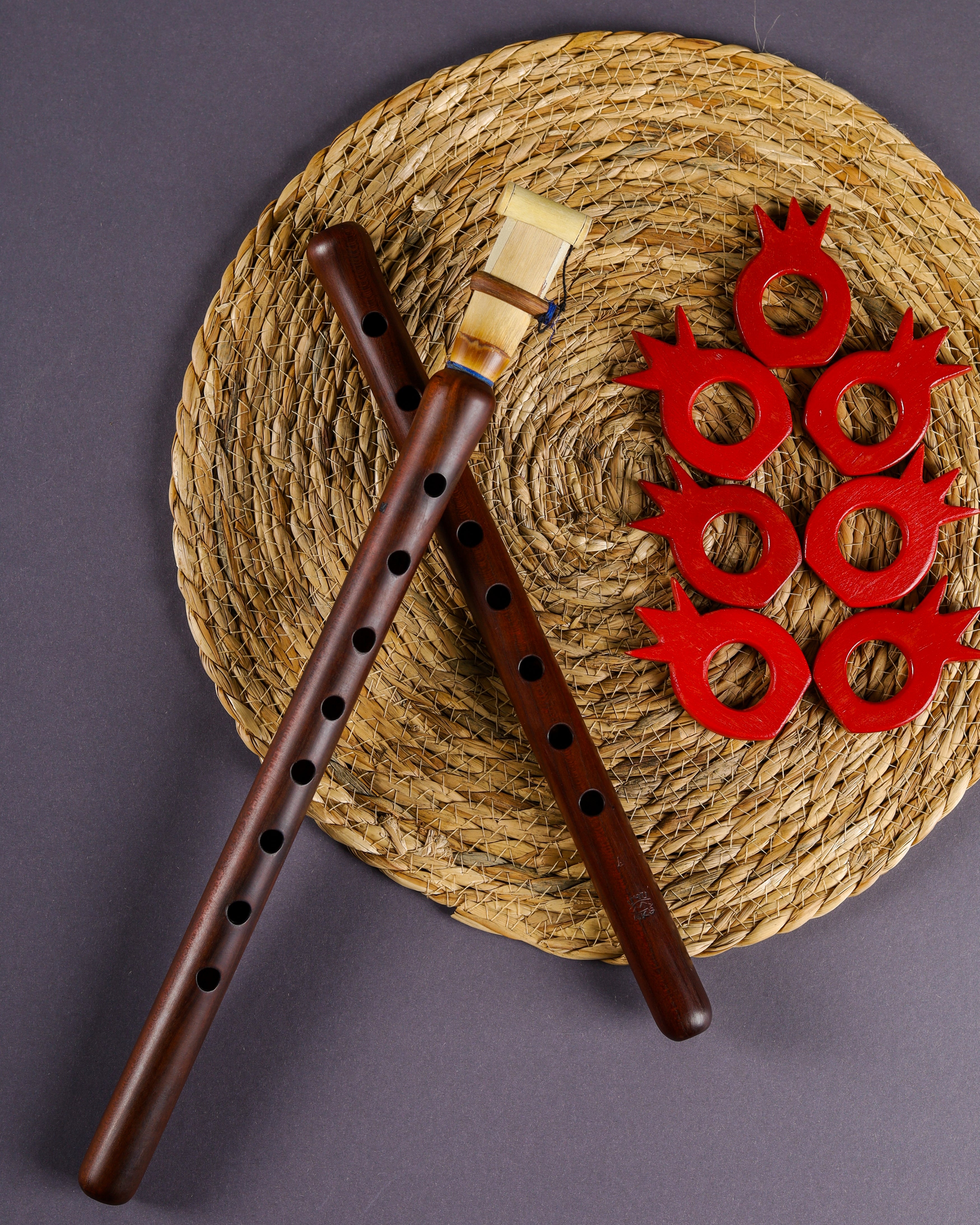The Duduk is a cylindrical wooden tube with ten holes - eight on the front and two on the back. Based on the diatonic scale, the interval between the notes on the Duduk is not always the same. It is structured as follows :
1/2 tone - 1 tone - 1 tone - 1 tone - 1/2 tone - 1 tone - 1 tone - 1/2 tone - 1 tone - 1 tone
For a Duduk in A
(A) - G# - F# - E - Re - C# - B - A - G# - F# - E
The Duduk can play 16 notes, which is one and a half octaves.To obtain all these notes, and not just the notes of the diatonic scale, you can partially cover a hole to lower the note by a half tone (this does not apply to the 1st, 5th, and 8th holes where the notes are already lowered by a half tone; in this case, partially covering these holes will result in a quarter tone).
There are specifics for playing four additional notes on the Duduk:
- By tightening the lips : When the Duduk is played without covering any holes, the note that should be heard is the one the instrument is tuned to. For a Duduk in La (A), this will be an La (A). However, by tightening the lips, it is possible to play two additional notes, Si flat (Bb) and Si (B/H).
- Using the diaphragm: When all nine fingers are used to cover the Duduk's holes, the diaphragm can be used to cover the tenth hole at the back of the instrument. This allows you to play two additional notes: Fa (F) and Mi (E).
These four additional notes are difficult to reach and are often not used in most compositions for the Duduk.
Tablature of a Duduk in A

Reading the Score
Music sheets are essential tools for any musician looking to learn or improve their skills on any instrument. They provide the opportunity to play pieces adapted for the Duduk with precision. However, there's an important peculiarity to note: Duduk music sheets are generally written in Do Major (or "for Duduks in C"), which means that the note "C" on the sheet music may not correspond to the note "C" on your Duduk if it's tuned in La (A), Sol (G), or another key.For example, if you play a Duduk in La (A), the note "C" on a sheet of music will actually correspond to an A (A) on your instrument. This method of writing is common for transposing instruments to avoid having to rewrite the music sheets for each different key.
To understand more about the notation of Duduk notes, you can explore additional information on Duduk tablature. This knowledge will help in accurately interpreting and playing music written for the Duduk, particularly when dealing with transpositions and understanding how written notes translate to the actual pitches on your specific instrument.

